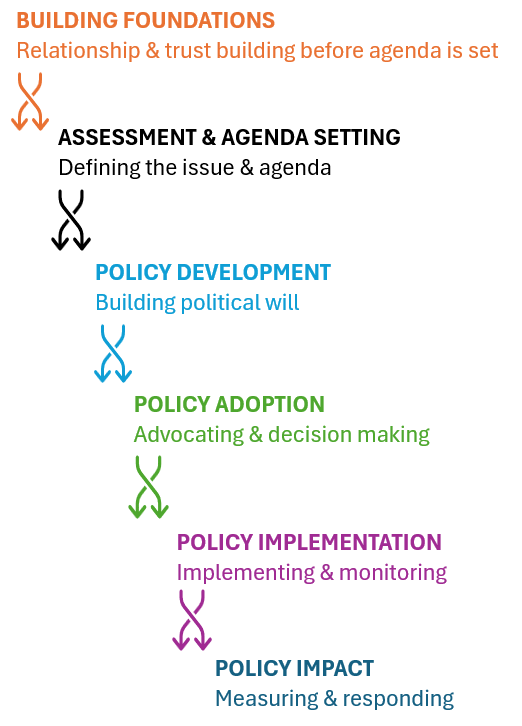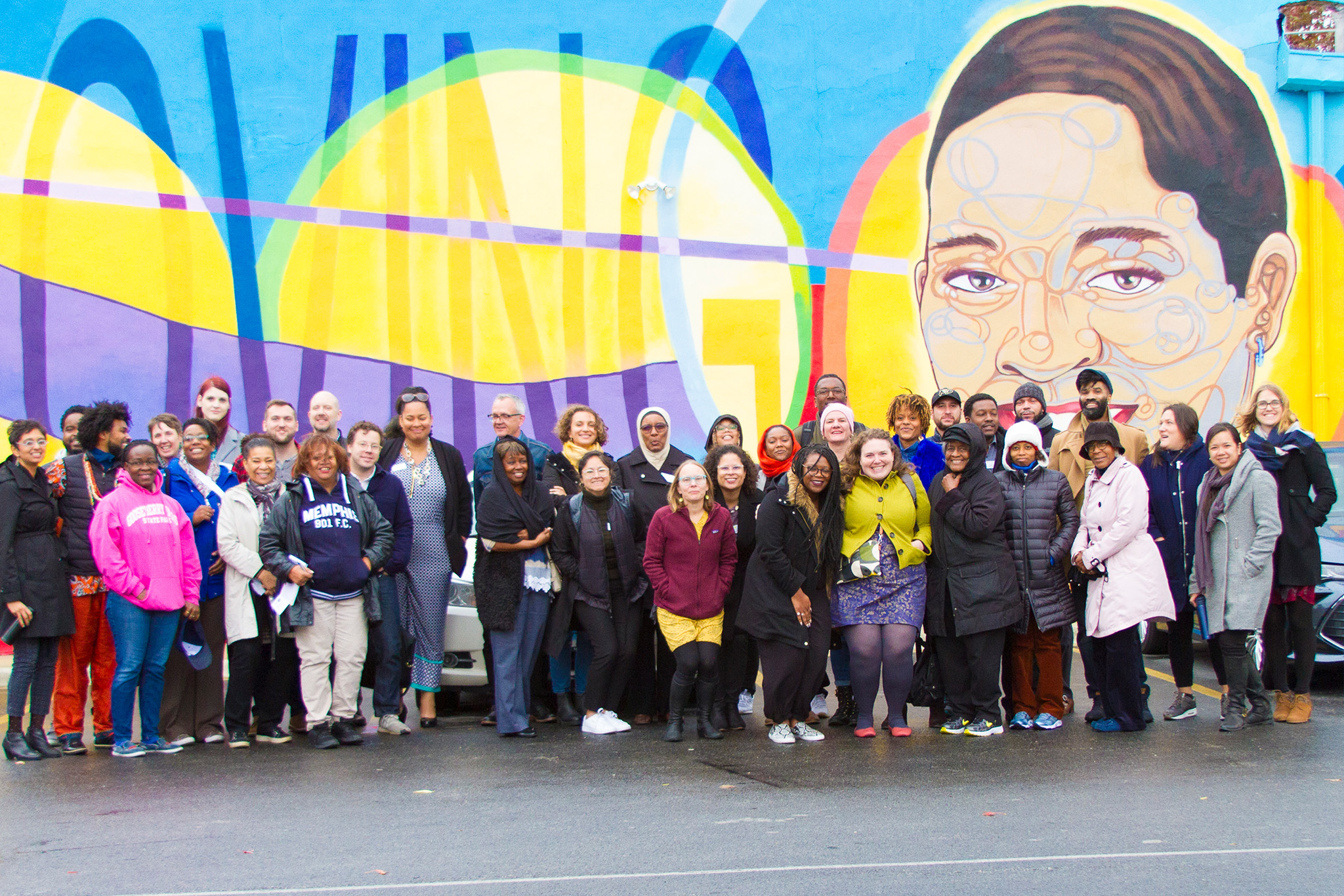Policy Spectrum
A framework for understanding and evaluating policy and advocacy initiatives
Foundations, government agencies, and nonprofits recognize that public and organizational policy change is a pathway to sustainable improvements in community health. However, investing in and evaluating broad, complex policy initiatives is challenging. Compared to more straightforward program evaluation, policy and advocacy evaluations must contend with far more dynamic and fluid situations that are often difficult to untangle. The policy spectrum is a concrete tool that evaluators and foundations can use to focus their efforts and assess progress across multiple sites. The spectrum:
- Provides a common language for evaluators, funders, advocates and policymakers to articulate the cycle of policy activity necessary for real change—instead of focusing only on a policy “win.”
- Underscores that progress isn’t always sequential movement, it may mean looping to previous steps.
- Conveys the effectiveness and impact of complex policy initiatives within generally short evaluation timeframes, particularly when local context varies dramatically.
- Helps stakeholders to understand if and how policy initiatives are making a difference, even when there is no immediate policy change.
- Balances the need for rigor and timeliness so the evaluation remains relevant and useful for real time improvement, while still capturing the longer-term impact of the policy change effort.
Policy spectrum elements

The policy spectrum framework brings insights throughout the initiative to help understand progress and strengthen the ongoing work. By understanding the stages of policy change, stakeholders can better engage in understand progress and improving their efforts in real time.
- Building foundations: Building relationships and trust. Meeting with leadership, staff, and community members to understand diverse perspectives. Includes understanding the political environment, researching, analyzing issues.
- Assessment & agenda setting: Defining the issue & agenda. Includes identifying strategies and evidence-based solutions, setting an agenda with key partners.
- Policy development: Building political will. Includes: framing & messaging issues, community organizing, convening stakeholders and coalition building, building policymaker relationships, developing campaigns & outreach, generating visibility & public accountability.
- Policy adoption: Advocating and decision making. Includes: advocating & lobbying, assessing & commenting on proposed policies (publicly and behind the scenes), policymaker decision making and accountability.
- Policy implementation: Implementing and monitoring. Monitoring implementation via agency staff/advocates, continuous improvement during real world application, generating resources for ongoing advocacy & litigation as needed, advocating for appropriate funding.
- Policy Impact: Measuring and reporting. Identifying/supporting communities & systems impacted by policy, measuring impact, identifying benefits, burdens, and unintended consequences.
Email: cche@kp.org for a rubric template to help plan and track progress on your policy, advocacy, or systems change
To see the model in action, check out one of the following examples of how CCHE has used this model to evaluate support policy and advocacy initiatives across the country:

In 2012, the Foundation for a Healthy Kentucky launched a six-year initiative to make public policy more responsive to the health and health care needs of Kentuckians. The evaluation leveraged the policy spectrum to focus not only how policies are passed, but also to shine a light on the efforts of advocates to monitor and influence how key policies, such as Medicaid expansion, are implemented. This Health Affairs blog post details how the evaluation supported PRHP during sudden changes in Kentucky’s political landscaping.

CityHealth, an initiative of the de Beaumont Foundation and Kaiser Permanente, promotes a menu of twelve policies that address social determinants of health across the 75 largest cities in the United States and recognizes policy adoption with medals. The evaluation uses the policy spectrum to support stakeholder understanding of key facilitators and challenges that arise at each stage of policy advancement.

The SPARCC initiative aims to shift decades of racially discriminatory policies and investments that have resulted in disparities in health and climate resilience in communities throughout the United States. SPARCC’s work is implemented by collaborative tables in six sites that formalize multi-sector relationships, facilitate collaboration, and provide a vehicle for community leadership and power. SPARCC seeks to influence systems of community investments, of which policy and practice change is a key component. The policy spectrum is the foundation on which CCHE’s evaluation assesses seemingly diffuse aspects of the work to understand the critical steps of progress towards broader systems change.